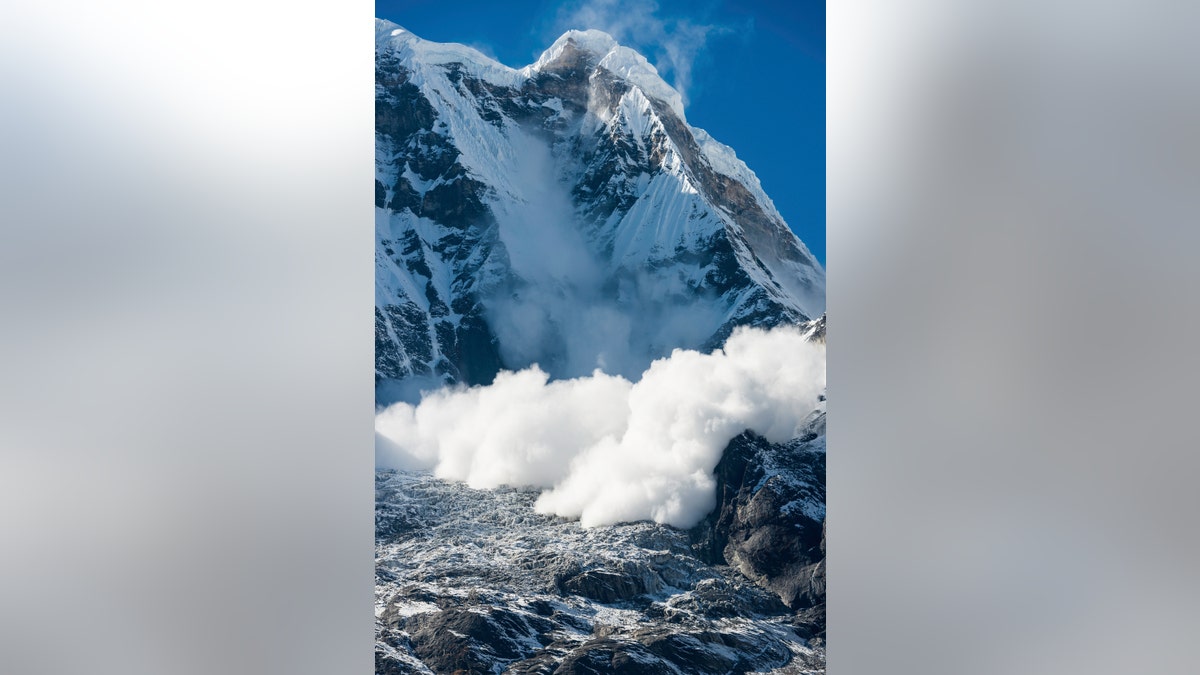
Beware Annapurna's dangerous avalanches. (iStock)
Avalanches, rapid movements of large masses of snow down a slope of a
mountain, kill an average of about 150 people a year, according to National
Geographic. Avalanches are not unique to certain massifs. Under the right
conditions, they can occur anywhere, even in mid-summer.
Geography and weather make some locations naturally more risky than others.
A large avalanche in North America might release 230,000 cubic meters
(300,000 cubic yards) of snow, as per the National Snow and Ice Data Center
(NSIDC). That is the equivalent of 20 football fields filled 10 feet deep with
snow.
A significant number of deaths occur in May and June, according to the
University of Wisconsin, demonstrating the hidden danger behind spring snows
and the melting season that catches many recreationists off-guard.
Contrary to popular belief, shouting and loud noises don’t cause an
avalanche. It is usually triggered by weight – a person walking in the wrong
spot is enough – or wind.
When a weak layer of snow under a slab cracks, which often happens when pressure, such as weight, is quickly applied, an avalanche is likely to occur. Rising temperatures will cause melting, weakening the layers of snow, and strong winds will blow it faster than any storm.
Avalanches generally occur on slopes steeper than 35 degrees. The two main types of snowslides are slab, known as “white Death,” which are often fatal, and sluff. Slab avalanches occur when a cohesive slab of snow releases over a wide area and sluff avalanches occur when loose superficial snow releases at a point and fans out as it descends, according to theNational Avalanche Center.
The harder it snows or rains, the more difficult it is for the snowpack to adjust, and the more likely it is for the snowpack to avalanche.
If you are ever caught in an avalanche, lose the ski poles and make yourself lighter. Try to stay on top of the snow by pretending you’re swimming. Stick your arms up so rescuers can see
you and quickly come to you. If you’re not near the surface, punch the snow to create an air space. Try not to panic so you can keep breathing steadily and not use all the air you have quickly.
1. Annapurna
"Annapurna is a life-taking mountain,” Mingma Sherpa wrote on his expedition page. Located in Nepal, the 10th highest mountain on the planet is known for its frequent and deadly avalanches. They are also quite sudden. Just about 150 people have even tried to climb the summit and about a third of them have died. This is the highest fatality rate.
2. The Alps

(iStock)
The Alps are the highest and most extensive mountain range system in Europe. It stretches across Austria, France, Germany, Italy, Liechtenstein, Monaco, Slovenia, and Switzerland. The French and Italian parts are particularly dangerous because of frequent avalanches. Around 30 people die each year in deadly avalanches in the French Alps; less than a month ago mass of snow falling killed at least six people in the Italian Alps. The fatalities are caused by dangerous weather conditions but also by people’s unawareness of the risks.
3. Wasatch Mountains
The Wasatch Mountains are often under an avalanche warning. In February, an experienced skier was buried in an avalanche that was 60 feet wide and 500 feet long. Even now, in April, there is a moderate risk. Heightened wet avalanche conditions will develop in steep terrain as saturated snow warms and softens up with exceptionally warm daytime temperatures and intense solar heating, according to Utah Avalanche Center.
More from The Active Times
The World's 11 Most Difficult Mountain Climbs
11 Most Dangerous Places for Ice Climbing
The 15 Best Places in the World to Go Heli Skiing
4. Montroc
Montroc gets dumped with the most snow in France. The infamous avalanche of 1999 killed 12 people and destroyed 14 buildings in this small village near Chamonix. The mayor was even found guilty of second degree murder for not evacuating people in advance. Little snow before several heavy storms created a very weak base layer for the eventual snowfall.
5. Kangchenjunga

Scenic panorama of majestic mountain wall of Kanchenjunga in Himalayas, Nepal (iStock)
This is the third tallest mountain in the world at more than 28,000 feet. A lot of snow on its steep hills and fast-changing and unpredictable weather cause many avalanches year-round. The huge massif of Kangchenjunga is buttressed by great ridges running roughly due east to west and north to south, forming a giant X. These ridges contain a host of spectacular 6-7,000 meter peaks, according to Summit Post. About a fifth of the people who attempt to climb the summit die.
